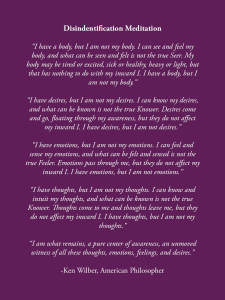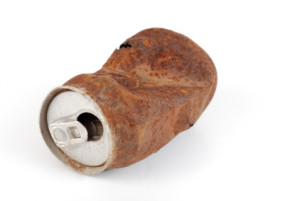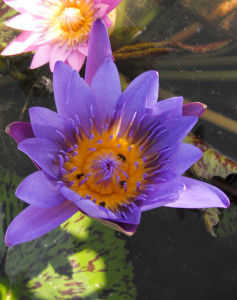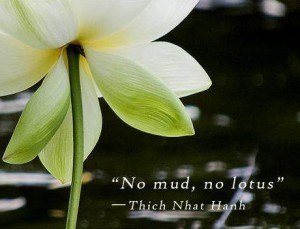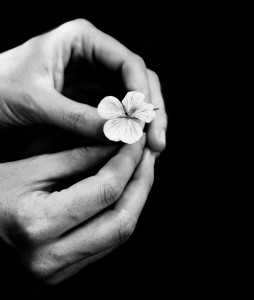This is my philosophy paper that I wrote for my first class, Foundations of Holistic Health. I am quite happy with it. I hope you enjoy reading it. I struggle with APA formatting, which I tried to include below. Feel free to drop me a note if you have a suggestion.
***
Intuition and Healing
There are many pathways to take to the roads to health, wellness and illness. With my years of personal experience on each these journeys, I have discovered that no one path is right for everyone and that taking positive responsibility by advocacy, and being an active participant in your healing journey is vital to your overall well-being. Over the last century, there has been an assumption that biomedicine is capable of fixing all medical issues and diseases with a pill or a surgery, when in fact, it only alleviates the symptom and frequently does not address the root cause. Essentially, the human is reduced to merely a physical body that operates like a machine – diseased and broken parts are repaired and replaced without acknowledgement of the person’s experience with the disease or life. There is a massive disconnect between the living, breathing, loving, laughing person, and the diseased body part in this same person’s body. What is more provocative, is the question of why biomedicine can provide competent technical care, but fails to provide humane and dignified care that seems fundamental to the human experience (Marcum, 2008). This is not to discredit biomedicine, but to help understand how to provide quality, whole care by understanding that mind, body and spirit all connect to form one being. Holistically approaching our health and wellness with a variety of methods is fundamental to achieving the best possible outcomes to live a life with meaning and intention, therefore, striking a balance between spirit, body, the mind and technology. This paper will address how intuition is intrinsically fundamental in relation to health, wellness, illness, the changing tides in approaches to complementary care, how both modern healers and patients need to approach the healer/patient relationship and how modern healers are forging a new frontier as social activists.
Perspectives on Health, Illness, Wellness and Paradigm Shift
The 1946 preamble to the World Health Organization’s (WHO) Constitution (“Constitution of the World Health Organization”, 1946) is quite succinct in their definition of health, “health is a state of complete physical, mental and social well-being and not merely the absence of disease or infirmity.” It is very clear that they do not view health as the absence of disease, but, they view it as a much broader human experience including both emotional and social aspects. Despite this enveloping view, in the 50 years following there was a shift away from health as a whole, focusing solely on the body’s function rather than looking at how the body functions in its environment. There are age-old adages, “follow your instincts” and “gut instincts,” and other similar sayings in nearly every culture and for a good reason. Humankind, by its birthright, is an instinctive and intuitive species. Instinct and intuition is what has allowed us to evolve and thrive for thousands of years. While the advent of biomedicine has made significant advances in health care, it has decreased people’s natural intuition, by becoming dependent on scientific findings rather than trusting their intuition and what their body is telling them. Paired with the increasing demands on our time in our modern world, we learn to ignore our intuition, but, it is always present (Lin, 2003). Even though many people have overlooked their most basic intuition when it comes to the fundamentals of their well-being, there are changes happening throughout biomedicine and the world around us. O. Carl Simonton, a radiation oncologist who began including lifestyle counseling to his patient’s treatment regimens, refers to this as “inner wisdom” in his books The Healing Journey and Getting Well Again (Simonton, 1978, 2002), which served as a ground breaking book. Inner wisdom is a tool to increase your sense of power, well-being, and peace of mind. Inner wisdom is further described by former surgeon Bernie Siegel in his book, The Art of Healing as “powerful inner resources for healing and problem solving (Siegel, 2013).” It is this profound inner wisdom, teased out by use of imagery and meditation, paired with all the wonderful tools we have in the worlds of biomedicine and other holistic healing modalities that are the key to attaining a true sense of health and wellness. As the 2007 Shift Report so concisely states, “When people start believing that they have choices, that their lives have meaning, then the future becomes a place to protect, not fear (The 2007 Shift Report, 2007).” This is abundantly true in all stages of health, illness and wellness as there are many studies related to positivity and their disease outcomes for multiple sclerosis, breast cancer and heart disease (Scheier & Carver, 1985). Biomedicine, along with guided visualization, meditation, nutrition, yoga, energy work, herbal medicine and other holistic treatments are all tools to add to the toolbox. Both healers and patients need to realize that the paths to wellness include a variety of options and by utilizing all of these tools to create a quality healing experience. Over the last half century, holistic care has become a more accessible and often the preferred modality of care amongst patients of all ages.
Changing Attitudes across Generations
Watching my parents’ generation, I have seen a blind trust of biomedicine and reliance on their doctors to prescribe the correct drugs, treatments and surgeries. As they have aged, and more pills are added to their daily regimen, they are beginning to question what is truly happening with their healthcare and quality of life. While there is still a fear of not following doctors’ orders, more seniors want to look outside the box to see if there are better ways to manage their healthcare to find pain relief and natural ways to deal with aging minds and bodies (Katz-Stone, 1998). Seniors are recognizing biomedicine is not a panacea for their ills and are looking towards the inner wisdom their parents and grandparents observed. In my own lifetime, I have seen an enormous change in how people are approaching their health. People are living far more consciously, connecting to their innate wisdom by following yoga practices, adopting healthy diets, making exercise a priority, engaging in spiritual practices, listening to their bodies, connecting with nature and understanding that as humans we are far more than a complex system of organs that run like machinery.
The Interchangeable Roles of Healer and the Patient
A critical shift for the modern healer in this new paradigm is to understand that they play a pivotal and varied role in the care of their client. We may play the role of a facilitator, and not necessarily leading the treatment modality; acting as both a consultant and compassionate champion; an intuitive advocate; and as a guide or mentor. Biomedicine has largely focused on a detached relationship between patient and healer, leaving both parties in a precarious relationship. The patient feels they are not being seen as a human, thus their disease and treatment becomes a larger source of fear and isolation, making them feel powerless. In turn, the healer questions their ability to truly care for their patients (Siegel, 2013, p.13). In stark contrast to the distant doctor-patient relationship that is so prevalent in Western medicine, in South African traditional healing, this patient-healer relationship is deeply rooted in personal connection. The relationship model is so intertwined that should the patient die, the healer goes through a grieving period where they remove their ceremonial artifacts and do not practice. With this sacred relationship broken and their healing powers diminished, the healer must be treated by another healer before they can practice again (Micozzi, 2011). It is this kind of interconnectedness that brings a sense of meaning not only to a person’s life and health that is vital for overall well-being for the individual and the community.
From the patient perspective, the most important part of the healing process is taking an active role in their health, illness and recovery. The patient’s new role may be a team captain, which assembles an “A-Team” to help coordinate their healthcare by including integrative and fitness coaches, medical professionals, dieticians, family members and friends who focus on the patient’s healing intentions and to help guide them through a health crises (Block, 2009). As many patients have taken a backseat to the doctor’s prescriptions and recommendations, it is time for patients to reclaim their power, their inner wisdom, to look at the various pathways and make decisions on what is their best course of treatment. Treatment modalities cannot be limited, but, should be explored to find what resonates best in the patient’s world. This might include traditional biomedicine of surgery and medications, but could combine, yoga, meditation or guided imagery. It may take a determined holistic approach that eschews biomedicine altogether and looks towards diet, alternative and homeopathic medications, exercise, yoga, meditation or prayer for healing intents. One of the most critical pieces of the patient’s healing journey is belief. It is what resonates with the individual that makes the most sense for their treatment based on their basic belief systems.
Belief systems are powerful tools that can work with or against the patient’s treatment goals and outcomes. Deeply connected to values and morals, beliefs are usually strongly held, and personal and affect the individual’s world view. If the patient does not have an internal concept of power, or an ability to generate internal energy or emotional resources such as self-sufficiency, they struggle with their healing process. (Myss, 1996) Ministering and sometimes helping the patient to remodel their belief systems requires diligence, compassion and respect on both the part of the patient and the healer. It is this responsibility, intuitiveness and self-reliance that keeps the healer-patient relationship dynamic and fluid, by exchanging ideas and exploring new pathways for the patient’s healing intentions.
Healer as Social Activist
Building on the role of the healer as a facilitator, the work of men and women over the ages who were bringing healing “to the people” have provided fundamental therapies to those who may not have had accessibility or the interest to pursue what is considered mainstream standards of care. In our not so recent past, these social activists have gone through tremendous amounts of strife from institutionalized medicine, which accused them of being witches or had laws enacted to prevent midwives from providing care to patients or to ban women from studying in medical schools (Ehrenreich & English, 2010). In recent times, there has been the American Medical Association’s (AMA) decades-long attempt to obliterate chiropractic care, referring to practitioners as “unscientific cultists.” A federal antitrust suit was brought against the AMA and subsequently ruled against in the early 1990’s (Hayes, 2012). With this sometimes violent, oppressive and systematic suffocation by the “established” medical world, it is important to understand how political tides can change. As modern healers, we need to draw on our inner wisdom to continue to provide dignified care to our patients and to observe the cultural shifts going on in the world around us. By organizing and staying connected to one another, it is our strongest support in maintaining high standards of care within our own vocations and having a professional collaborative to create better ways to continue to have meaningful practices.
Intuition as a source of healing inspiration
Intuition is a small but mighty piece to the healing puzzle for the patient, the healer and our social world. It can provide precious insight into personal health, healing and wellness by providing a bridge between “medical and moral reasoning” (Braude, 2012) but also to the wellness of our global community. We are all born with an innate sense of intuition, which needs to be developed and nurtured. By finding those pathways which provide us the best possible terrain in which to flourish, embracing our natural intuition and listening to our minds, bodies and spirits, modern healers offer the best possibility for society to achieve our individual and collective goals for health, wellness and healing.
References
Marcum, J. A. (2008). Reflections on humanizing biomedicine. Perspectives in Biology and Medicine, 51(3), 392-405. doi:10.1353/pbm.0.0023
Constitution of the World Health Organization. (1946, July 22). Retrieved October 5, 2014, from http://www.who.int/governance/eb/who_constitution_en.pdf
Lin, C., & Rebstock, G. (2003). Born a healer. United States: Chunyi Lin.
Simonton, O., & Henson, R. (1992). The healing journey. New York: Bantam Books.
Simonton, O., & Simonton, S. (1978). Getting well again: A step-by-step, self-help guide to overcoming cancer for patients and their families (1992 ed.). Los Angeles: J.P. Tarcher ;.
Siegel, B. (2013). The art of healing. Novato: New World Library.
The 2007 Shift report: Evidence of a world transforming. (2007). Petaluma, CA: Institute of Noetic Sciences.
Scheier, M. F., & Carver, C. S. (1985). Optimism, coping, and health: Assessment and implications of generalized outcome expectancies. Health Psychology: Official Journal of the Division of Health Psychology, American Psychological Association, 4 (3), 219-247. doi:10.1037/0278-6133.4.3.219
Katz-Stone, A. (1998, January 19). A different dose: Seniors are discovering alternative medicine as a way to stay healthy. Retrieved September 30, 2014, from http://www.bizjournals.com/baltimore/stories/1998/01/19/focus1.html
Micozzi, M. (2011). Fundamentals of complementary and alternative medicine (4th ed.). St. Louis, Mo.: Saunders Elsevier.
Block, K. (2009). Life over cancer: The Block Center program for integrative cancer treatment. New York: Bantam Dell.
Myss, C. (1996). Anatomy of the spirit. New York: Three Rivers Press.
Ehrenreich, B., & English, D. (2010). Witches, midwives & nurses (2nd ed.). New York, NY: Feminist Press.
Doctored [Motion picture]. (2012). United States: Jeff Hays Films.
Braude, H. D. (2012). Intuition in medicine: A philosophical defense of clinical reasoning. Chicago; London: The University of Chicago Press.

